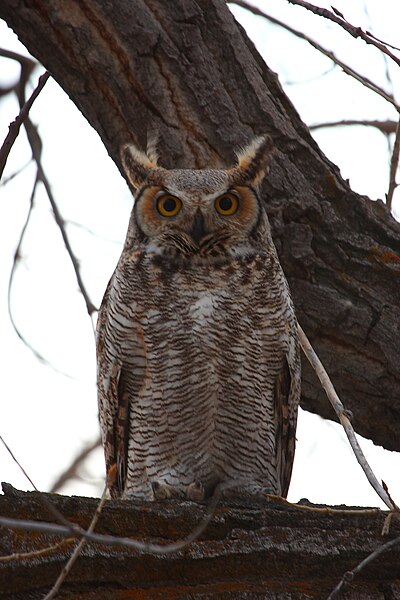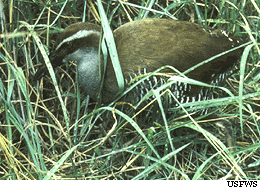The concept of behavioral enrichment encompasses a number of techniques designed to encourage a captive animal to live, for lack of a better word, a “fuller” life. We do this by exploiting natural behaviors in a way that encourages the animal to stretch its mind and body by exploring, exercising, hunting, trying new foods and so on – activities outside of the basic necessities of captive life.
The Importance of Enrichment Opportunities
 Parrots, with their limitless curiosity and energy levels, are ideal enrichment candidates. This is fortunate, as enrichment activities go beyond “nice to do” for such highly intelligent birds. Most animals that I have worked with in zoos, from fish to mammals, benefit from “BE”, as zoo keepers term it. However, active, inquisitive, social species – parrots, crows, primates, wolves and so many others – need physical and mental stimulation if they are to not just endure but thrive in captivity.
Parrots, with their limitless curiosity and energy levels, are ideal enrichment candidates. This is fortunate, as enrichment activities go beyond “nice to do” for such highly intelligent birds. Most animals that I have worked with in zoos, from fish to mammals, benefit from “BE”, as zoo keepers term it. However, active, inquisitive, social species – parrots, crows, primates, wolves and so many others – need physical and mental stimulation if they are to not just endure but thrive in captivity.
What’s more, opportunities to explore and think stave off boredom, and in parrots this often translates into a well-adjusted pet that does not pluck its feathers or scream.
Following is a review of the major categories of BE. You’ll notice that the various types overlap, and most stimulate parrots in more than one way. Please see our large selection of unique parrot toys, play pens, perches and CD’s – many will be useful in organizing a BE program for your pet.
Physical Enrichment
I really favor this with parrots – after watching several species in the wild, I’m convinced that physical movement should be a key component of any pet parrot’s BE program. Parrots, even those long confined to boring cages, take well to wing and leg-stretching opportunities.
Provide a complex cage, and remember that you can vastly increase the cage’s usable area by adding climbing surfaces. Birds that flit from perch to perch, such as finches, make good use of spacious cages. But caged parrots move about mainly by climbing – a huge cage is not much good if the bird can merely sit on a perch or two and stare into space.
Install vines and perches of varying widths and sizes, so that your pet can make full use of the space afforded to it. Wild grapevine is particularly useful as you can find nearly any shape and size needed – just be sure you can distinguish it from poison ivy! Parrots will also delight in using and shredding branches from fruit and other non-toxic trees (please see Pet Birds and Plants – Avoiding Toxic Species).
When adding toys to your parrots cage, don’t just attach them within reach – try making your pet work, by installing the toys in locations that can only be reached by hanging, climbing sideways, etc.
Social Enrichment
 This category of BE includes interactions with other birds, people and (if safe!) other pets. When your parrot is left alone, a training CD, TV or radio may provide some diversion.
This category of BE includes interactions with other birds, people and (if safe!) other pets. When your parrot is left alone, a training CD, TV or radio may provide some diversion.
Mental Enrichment
Anything that stimulates your parrot to “figure some thing out” qualifies as mental stimulation. This can range from hiding its food, supplying a foraging toy within which a treat is secreted or simply introducing a safe, novel item into its environment (i.e. a pine cone or cardboard box).
Nutritional Enrichment
Hiding and varying the diet works well with any animal – just watch a group of guppies habituated to a fish flake diet react to a chunk of frozen prawn if you have any doubt as to the universality of the technique. Nutritionally based enrichment is also very easy to introduce, and the possibilities are limitless.
Please browse our parrot food selections for unique items to offer your pet, and consider using whole fruits and nuts as opposed to pre-cut pieces. Research your pet’s wild diet and then search for some foods it might appreciate – food markets in Asian, Latin American, African and Caribbean communities offer a wealth of nutritious fruits, nuts and vegetables, some of which might be part of your pet’s natural diet.
Time and time again, I have been surprised by the very noticeable change in an animal’s level of excitement when offered a new or natural food item. This applies whether the animal in question is a toad or a tiger – I’m sure you will be delighted at your parrot’s reactions.
Small meals spread over time and food items hid about the cage or, if safe, the house, are other tried and true methods of keeping your parrot on his or her toes.
Sensory Enrichment
Pay attention to those noises that stimulate your bird to call, display, bathe or just sit up and take notice. Play these and similar ones to rouse it to activity.
Of course, avoid using noises that might startle or instill fear in your pet – your macaw might not appreciate a recording of the scream of a harpy eagle, for example…then again, it would be interesting to see if a captive born macaw might respond to a predator’s call!
An excellent article on the natural foraging and social behaviors of the kea is posted on the web site of the University of Nebraska’s Avian Cognition Center:
http://www.biosci.unl.edu/avcog/research/kea.htm
 That Bird Blog – Bird Care and History for Pet Birds
That Bird Blog – Bird Care and History for Pet Birds

 Today I’d like to cover a bird that, while generally illegal to keep in the USA, is one of the largest and most impressive species that might reasonably be encountered anywhere within the USA, and beyond – the Great Horned Owl.
Today I’d like to cover a bird that, while generally illegal to keep in the USA, is one of the largest and most impressive species that might reasonably be encountered anywhere within the USA, and beyond – the Great Horned Owl. mazingly aggressive little birds, and bred readily. Today they thrive in zoos and have been released onto Guam’s neighboring island, Rota. The Micronesian Kingfisher, Halcyon cinnamomina, also holds on in captivity but is gone from the wild. These have proven more difficult than the rails – those I worked with fed well but remained edgy and usually failed to breed. Captives that do reproduce often make poor parents, and hand rearing of the chicks is sometimes necessary.
mazingly aggressive little birds, and bred readily. Today they thrive in zoos and have been released onto Guam’s neighboring island, Rota. The Micronesian Kingfisher, Halcyon cinnamomina, also holds on in captivity but is gone from the wild. These have proven more difficult than the rails – those I worked with fed well but remained edgy and usually failed to breed. Captives that do reproduce often make poor parents, and hand rearing of the chicks is sometimes necessary. and introduced house mice and rats are the only rodents observed in recent years. People have been bitten while sleeping (it is theorized that the snakes strike at rapid eye movements – how’s that for a “rude awakening”!?) and bird owners sometimes find a stuffed snake in a cage that formerly held their pet.
and introduced house mice and rats are the only rodents observed in recent years. People have been bitten while sleeping (it is theorized that the snakes strike at rapid eye movements – how’s that for a “rude awakening”!?) and bird owners sometimes find a stuffed snake in a cage that formerly held their pet. considered by many ornithologists (biologists who study birds) to be the most intelligent of the world’s 9,000+ bird species. People have apparently held this view from the earliest of times, as the folktales and legends of many races are filled with tales attributing great powers and cunning ways to these impressive birds.
considered by many ornithologists (biologists who study birds) to be the most intelligent of the world’s 9,000+ bird species. People have apparently held this view from the earliest of times, as the folktales and legends of many races are filled with tales attributing great powers and cunning ways to these impressive birds. of the extinction of the USA’s only native breeding parrot, the Carolina Parakeet, Conuropsis carolinensis. The last known specimen of this species died in 1918, in the Cincinnati Zoo. However, a spectacular, pigeon-sized parrot once frequented the mountains of southern Arizona and New Mexico, gorging on pine cones before migrating south to breed.
of the extinction of the USA’s only native breeding parrot, the Carolina Parakeet, Conuropsis carolinensis. The last known specimen of this species died in 1918, in the Cincinnati Zoo. However, a spectacular, pigeon-sized parrot once frequented the mountains of southern Arizona and New Mexico, gorging on pine cones before migrating south to breed.